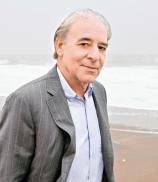Mission to Paris
Review
Mission to Paris
Alan Furst has garnered a sizable following for his historical spy novels set in Europe on the eve of World War II, and there’s no reason he shouldn’t extend that franchise with MISSION TO PARIS, centered in the “fogbound land of intrigue” that was France in those years.
When Fredric Stahl arrives in Paris to film a movie in September 1938, the Austrian-born Hollywood star finds himself immersed in the world of menace that swirls around the increasingly powerful German presence in the city. While the French “looked away from evil” because it “drained the pleasure from life,” Stahl is troubled by encounters with acquaintances from his past who merge with the community of German expatriates to exert a malign gravitational pull. Known for roles in which he plays a “warm man in a cold world,” the actor occupies a similar role in real life as he glides from work on a movie ironically titled Après la Guerre to parties and dinners in stylish restaurants and bistros.
"Furst employs a crisp, uncluttered prose style to maintain the tension of the story up to almost the final page, instead of letting it leak away in an overlong denouement."
Though at first he resists an invitation to judge a festival of German mountain films, Stahl’s decision to travel to Berlin for that event with the encouragement of an American diplomat propels him into the world of espionage. The funds that enable him to purchase secrets from the Russian actress and spy Olga Orlova come from an unusual source, one that reflects the tension between the powerful isolationist sentiment that existed in the late 1930s and the realism of the Roosevelt administration about the looming war. Stahl’s brief visit to Germany coincides with Kristallnacht on November 9-10, 1938, an event he experiences only glancingly from the comfort of his luxury hotel room that evening and the following morning as he watches the streetsweepers shoveling up the broken glass.
Despite brief excursions to Morocco and Hungary, it’s Paris that occupies center stage in the novel. Furst lovingly evokes the city’s atmosphere as a gorgeous fall slips into winter and the threat of war looms:
“On a bridge across the Seine, the streetlamps along the balustrade were no more than ghostly blurs of light in the river fog. Deserted streets after that, wet from an evening rain, one café still lit, with one patron, a woman in a fur hat with a glass of wine before her. Winter Paris, Christmas coming, the Galeries Lafayette would have its toy train running in the window, the station roof glittering with granular snow.”
While there are fewer of the betrayals and reversals that make up the standard fare of most spy thrillers, Furst delivers plenty of close calls and heart-stopping moments as Fredric Stahl discovers it’s impossible to dabble in the spy game. Furst employs a crisp, uncluttered prose style to maintain the tension of the story up to almost the final page, instead of letting it leak away in an overlong denouement. It’s not hard to tell the good guys from the bad (most of the German characters --- among them a countess, a film director and assorted Nazi functionaries --- have at least one unattractive physical feature), and Stahl doesn’t have quite the moral heft of a Graham Greene or John le Carre protagonist. Still, his ambivalence at entering the world of espionage feels plausible and his main romantic relationship --- with Renate Steiner, a German émigré costume designer on his movie who watches the rising Nazi threat with increasing dismay --- evolves credibly.
Most readers who have any interest in the historical period Furst has explored to great commercial success probably have discovered him by now. However, those who aren’t so familiar with him should enjoy MISSION TO PARIS and find it a satisfying gateway into the settings and themes of his body of work.
Reviewed by Harvey Freedenberg on August 2, 2012
Mission to Paris
- Publication Date: June 12, 2012
- Genres: Fiction, Historical Fiction, Historical Thriller, Spy Fiction, Suspense, Thriller
- Hardcover: 272 pages
- Publisher: Random House
- ISBN-10: 1400069483
- ISBN-13: 9781400069484





